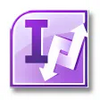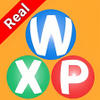Windows form creation utility with Filler and Designer modes originally offered alongside Microsoft Office 2003
Windows form creation utility with Filler and Designer modes originally offered alongside Microsoft Office 2003
Vote: (84 votes)
Program license: Paid
Developer: Microsoft
Version: 2010
Works under: Windows
Vote:
Program license
(84 votes)
Paid
Developer
Version
Microsoft
2010
Works under:
Windows
Pros
- User-friendly design capabilities without needing to code
- Integration with Microsoft SharePoint for enhanced collaboration
- Familiar user interface for anyone acquainted with Microsoft Office
- Availability of advanced features for complex form requirements
- Dual-component system streamlines form design and data entry tasks
Cons
- Discontinued by Microsoft; no newer versions beyond 2013
- May be overwhelming for users without technical background
- Replaced by Microsoft PowerApps as a more modern solution
**Create forms with ease using Microsoft InfoPath**
Design and Create Forms Without Programming Skills
Microsoft InfoPath is a robust software application designed to streamline the process of creating forms for business and management purposes. Integrated within the Microsoft Office Professional Plus 2010 suite, InfoPath provides enterprises and professional users with the ability to develop customized forms without requiring in-depth coding skills. Its intuitive interface, coupled with the familiar Office tools, makes form creation both a quick and smooth experience.
Dual-Component System: InfoPath Designer and InfoPath Filler
InfoPath comes with a dual-component system to cater to different aspects of form management. The **InfoPath Designer** is the primary workspace where users can construct forms from scratch or leverage numerous predefined templates as foundational blueprints. This component is equipped with a plethora of design elements and controls, which facilitate a varying degree of customization according to user preference or project requirements.
On the flip side, the **InfoPath Filler** offers an uncluttered platform tailored for users tasked with completing forms. Its clean interface helps users focus on entering information without distractions or encountering unnecessary complications, which often leads to higher data accuracy and a more streamlined data-entry process.
Rich Integration with Microsoft SharePoint
Another key advantage of InfoPath is its seamless integration with Microsoft SharePoint. This feature enables professionals to publish and share forms directly, bolster the development of modular SharePoint apps, and experience enhanced capabilities in web form functionalities. The synergy between InfoPath and SharePoint allows for a centralized repository that facilitates data collection and analysis, improving team collaboration and workflow effectiveness.
Advanced Features for Professional Users
While InfoPath is accessible for users new to form creation, it has a suite of advanced features that will appeal to more experienced users with knowledge of database management and XML. These professional-grade facets afford users the flexibility to implement complex logic, automate processes, and create rich, dynamic forms. Such a level of intricacy allows for the creation of forms that can perform sophisticated data operations, such as pulling information from external databases or applying conditional formatting.
End of the Road and Replacement Alternatives
As of my knowledge cutoff, it should be noted that Microsoft InfoPath has been succeeded by Microsoft PowerApps as the recommended tool for custom form creation and digital process automation within the Microsoft ecosystem. While existing InfoPath forms will continue to work, the move toward more advanced, cloud-centric tools reflects the evolving tech landscape and Microsoft's commitment to staying at the forefront of productivity solutions.
Pros
- User-friendly design capabilities without needing to code
- Integration with Microsoft SharePoint for enhanced collaboration
- Familiar user interface for anyone acquainted with Microsoft Office
- Availability of advanced features for complex form requirements
- Dual-component system streamlines form design and data entry tasks
Cons
- Discontinued by Microsoft; no newer versions beyond 2013
- May be overwhelming for users without technical background
- Replaced by Microsoft PowerApps as a more modern solution




